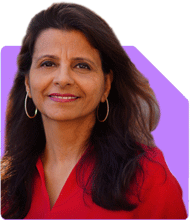Is My Blood Sugar High? | Narendar, 41, Worried About Diabetes
Komal Jethmalani | Answer |Ask -Follow
Dietician, Diabetes Expert - Answered on Nov 20, 2024
She specialises in weight loss and diabetes management.
Jethmalani has completed her MSc in food and nutrition from SNDT University and trained at Jaslok Hospital.
She is a NDEP-certified diabetes educator.... more

Hello Sir My Name is Narendar my age is 41 and my weight 83 my hba1c is is 6.6 and average glucose levels 142 Fasting 101 and post lunch 110 and till now iam not using any medicine related to diabetes Pls suggest iam diabetes or not what should I do now
You may like to see similar questions and answers below
Dr Rahul Baxi | Answer |Ask -Follow
Diabetologist - Answered on Apr 23, 2023
Dr Hemalata Arora | Answer |Ask -Follow
General Physician - Answered on Jun 09, 2023
Dr Karthiyayini Mahadevan | Answer |Ask -Follow
General Physician - Answered on Jun 26, 2024
Dr Karthiyayini Mahadevan | Answer |Ask -Follow
General Physician - Answered on Jul 27, 2024
Dr Karthiyayini Mahadevan | Answer |Ask -Follow
General Physician - Answered on Oct 08, 2024
Dr Shyam Jamalabad |107 Answers |Ask -Follow
Dentist - Answered on Dec 05, 2025
Dr Shyam Jamalabad |107 Answers |Ask -Follow
Dentist - Answered on Dec 05, 2025
Dr Dipankar Dutta |1836 Answers |Ask -Follow
Tech Careers and Skill Development Expert - Answered on Dec 05, 2025
Ulhas Joshi |280 Answers |Ask -Follow
Mutual Fund Expert - Answered on Dec 05, 2025
Dr Dipankar Dutta |1836 Answers |Ask -Follow
Tech Careers and Skill Development Expert - Answered on Dec 04, 2025
Ravi Mittal |676 Answers |Ask -Follow
Dating, Relationships Expert - Answered on Dec 04, 2025
Anu Krishna |1745 Answers |Ask -Follow
Relationships Expert, Mind Coach - Answered on Dec 04, 2025
Anu Krishna |1745 Answers |Ask -Follow
Relationships Expert, Mind Coach - Answered on Dec 04, 2025
Mayank Chandel |2562 Answers |Ask -Follow
IIT-JEE, NEET-UG, SAT, CLAT, CA, CS Exam Expert - Answered on Dec 04, 2025
Mayank Chandel |2562 Answers |Ask -Follow
IIT-JEE, NEET-UG, SAT, CLAT, CA, CS Exam Expert - Answered on Dec 04, 2025




























